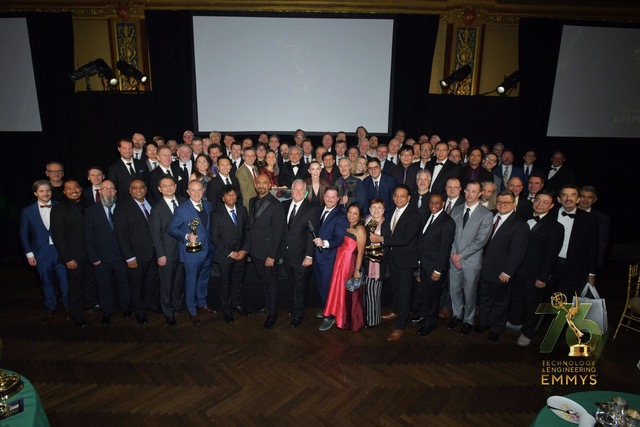New ARRI Network Interface Adapter Expands Camera Control Via Ethernet
By introducing Ethernet connectivity to its Electronic Control System, NIA-1 enables seamless integration, advanced remote control and scalable multidevice configurations

MUNICH—ARRI has released the Network Interface Adapter NIA-1, which offers camera and lens control via Ethernet. The adapter is designed to bridge modern IP workflows and traditional LBUS-based camera and lens control systems, the company said.
By introducing Ethernet connectivity to the ARRI Electronic Control System (ECS), NIA-1 enables seamless integration, advanced remote control, and scalable multidevice configurations. ECS tools such as the Hi‑5 hand unit can now function with negligible latency over an IP network, expanding third-party camera compatibility and benefiting both cine and live productions, the company said.
Compact, powerful and robust, the NIA-1 features LBUS, Ethernet, and USB-C connectors. The status of each connector is displayed on the touchscreen, which provides an intuitive user interface.
Besides the touchscreen, the NIA-1 can also be controlled from any device in the same network via a web interface.
With the NIA-1, ARRI said that it is introducing the concept of network channels—a new and simple way to configure IP networks on a film set. Users just need to set the same network channel letter designation on each connecting device, for example the letter ‘A’ for the A-camera. Connection is fast and easy, with the NIA-1 automatically managing complex network settings, although manual IP configuration is also an option when incorporating the NIA-1 into advanced networks.
In addition, the NIA-1 improves and extends control of third-party cameras from within the ARRI ecosystem, which will be of particular interest to current and prospective Hi‑5 owners, ARRI said.
Instead of multiple specialist cables for different cameras, each with varying control limitations, the NIA-1 connects directly to the camera via a network, allowing much more comprehensive control of camera functions with ARRI ECS tools, the company said. Mounting the NIA-1 to any camera is made simple by the purpose-designed Rotary Release Adapter RRA-1, which has a quick-release dovetail interface and tough, all-metal construction, ARRI explained.
The professional video industry's #1 source for news, trends and product and tech information. Sign up below.
The NIA-1 will also offer compatibility with Blackmagic URSA Cine and Sony Burano cameras, activated through permanent licenses that can be purchased in the same way as other Hi‑5 licenses. The existing Sony Camera Control License for Hi‑5 will offer NIA-1 compatibility for the Venice camera with the release of the first NIA-1 software update, enabling significantly more advanced options for controlling the Venice with ARRI ECS devices, the company said.
The NIA-1 also offers notable possibilities for live broadcast productions, complementing ARRI’s ALEXA 35 Live—Multicam System, the company said. The system’s built-in secondary Ethernet tunnel allows for NIA-1 connectivity, seamless integration with the ARRI LPS-1 and precise, real-time camera and lens control over vast distances. ARRI CSS products such the 360 EVO stabilized remote head are NIA-1 compatible, so they can be used with ECS tools over a single Ethernet or fiber connection as part of a simple plug-and-play setup.
ARRI also reported that focus pullers and DITs may want to use the NIA-1 to remotely control lens or camera settings over IP networks. For simple setups, two NIA-1 units can be connected by an Ethernet cable up to 100 meters long, or by a fiber optic cable if longer distances need to be covered. One use case is underwater shots, where a submerged camera with a NIA-1 can be connected via Ethernet to another NIA-1 at the surface, as well as an ARRI RIA‑1 that permits the focus puller to operate a Hi‑5 untethered. For crane shots, an Ethernet cable can connect a NIA-1 on the camera to another at the crane base, reducing the radio signal distance for remote focus pulling. And for motion control or robot camera setups, the NIA-1 allows low latency control of ARRI lens motors from anywhere in an IP network.
Multi-camera applications are yet another area where the NIA-1 brings new advantages, the company explained. Whether it’s a 3D rig, a multi-camera array for VFX plate shots, or a beam-splitting rig for infrared capture, the NIA-1 enhances simultaneous control of lens motors and camera settings, including synchronized focus pulls even with different lens types and focal lengths.
ARRI also stressed that the wide-ranging possibilities of NIA-1 applications, which include control of ARRI lens motors or cameras from third-party devices via IP. To encourage those applications, ARRI is extending its partner program and encouraging third-party vendors to integrate ARRI ECS into their hardware and software products—from motion control robots to virtual production tools, and more besides.
The ARRI NIA-1 will be available in Q3 2025. To learn more, visit www.arri.com/nia-1.
George Winslow is the senior content producer for TV Tech. He has written about the television, media and technology industries for nearly 30 years for such publications as Broadcasting & Cable, Multichannel News and TV Tech. Over the years, he has edited a number of magazines, including Multichannel News International and World Screen, and moderated panels at such major industry events as NAB and MIP TV. He has published two books and dozens of encyclopedia articles on such subjects as the media, New York City history and economics.

